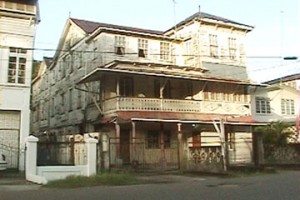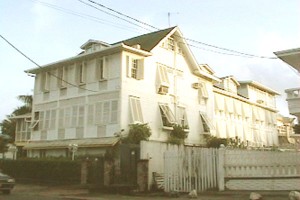Francis Quamina Farrier reflects on three of Georgetown’s wooden buildings and their impact on the shaping of contemporary Guyanese culture.
Some buildings talk; at least they talk to me. If you want to hear their stories you have to listen carefully. Sometimes you have to touch them in order to absorb their treasure troves of information.
 Three of Georgetown’s wooden structures come to mind. They have myriad stories to tell and they have told me some of those stories. Each of these three buildings lay legitimate claim to being a catalyst for CARIFESTA.
Three of Georgetown’s wooden structures come to mind. They have myriad stories to tell and they have told me some of those stories. Each of these three buildings lay legitimate claim to being a catalyst for CARIFESTA.
First, there is the Taitt Family home on Quamina Street, now The Cara Lodge. Then there is the home of Dr. Singh on Lamaha Street.. The third building is the City Hall.
Some of Guyana’s truly great cultural icons were spawned in the Taitt family home. Half a century or more ago it used to serve as a kind of cultural headquarters for creative souls, people who immersed themselves in music, art and theatre; people like Ron Savory, one of Guyana’s truly great artists, come to mind. Ron now lives in St Lucia. That is where he has been for thirty years or more.
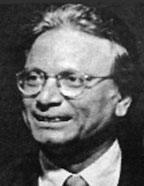 Then there is Michael Gilkes, a member of the Taitt clan, whose distinguished career in the theatre and in literature was spawned in that very home and whose memorable play, COUVADE, was staged at the Theatre Guild Playhouse in August 1972. More recently, Michael staged his truly impressive one-man theatrical performance, “THE LAST OF THE REDMEN” at ‘the big house’ on Quamina Street.
Then there is Michael Gilkes, a member of the Taitt clan, whose distinguished career in the theatre and in literature was spawned in that very home and whose memorable play, COUVADE, was staged at the Theatre Guild Playhouse in August 1972. More recently, Michael staged his truly impressive one-man theatrical performance, “THE LAST OF THE REDMEN” at ‘the big house’ on Quamina Street.
Then there was Cecily Nobrega, another creative product of ‘the big house.’ Her musical play STABROEK FANTASY had its origins there and I recall that it was staged at the Queens College Auditorium to large and appreciative audiences and, afterwards, basked in rave reviews. The music for STABROEK FANTASY was written by musical genius Hugh Sam who now lives in Manhattan. Hugh led a Steelband and Symphonia which remains one of the outstanding musical products of the Taitt House.
The careers of some of Guyana’s outstanding pre- and post independence men of theatre were fashioned at the Taitt House. Ken Corsbie, Clairmont Taitt, Ricardo Smith and Marc Matthews, all benefited from kindergarten lessons in theatre at the Taitt house.
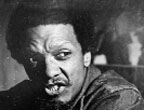 The creative women were there too. Helen Taitt, the prima ballerina of British Guiana, was possessed of outstanding talent. She conducted her ballet classes in the living room and the dining room. Ken, Clairmont, Ricardo and Wilbert were among the boys who benefitted from Helen’s lessons. Ballet, they conceded, enhanced their performances on the cricket field and on the basketball court.
The creative women were there too. Helen Taitt, the prima ballerina of British Guiana, was possessed of outstanding talent. She conducted her ballet classes in the living room and the dining room. Ken, Clairmont, Ricardo and Wilbert were among the boys who benefitted from Helen’s lessons. Ballet, they conceded, enhanced their performances on the cricket field and on the basketball court.
Later, Helen spent many years in the Caribbean, North America and Europe, where she enjoyed a successful career in classical dance. Her ashes are interred on the grounds of ‘the big house’ where a sapodilla tree, planted by the previous Prince of Wales once stood for decades.
Then there was Dorothy Taitt, the grand dame of that long-gone era of classy Georgetown ladies. Dorothy was a Georgetown town councillor, a classical contralto singer and an arts and cultural enabler. Aria, her sister, was the unofficial house keeper at ‘the big house.’
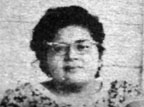 The psycologist Dr Horace Taitt, – the Frank Beckles of his day – was also an outstanding product of the Taitt House legacy.
The psycologist Dr Horace Taitt, – the Frank Beckles of his day – was also an outstanding product of the Taitt House legacy.
Jocelyn Dow and Dr, Rupert Roopnarine are among the survivors from that era. Rupert lived on the upper flat for a period. It was here that he nurtured the passion that has made him one of Guyana’s greatest performers of poetry.
‘The Big House’ also lays legitimate claim to the fashioning of the Philharmonic Orchestra and Choir, the Dorcas Girls.
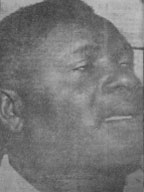 The Singhs’ residence on Lamaha Street can also lay claim to being one of the truly notable houses of culture in Georgetown. Some of the most intellectually robust and stimulating discourses on Guyanese culture of that era took place in the Singh House. Those discourses involved some of Guyana’s true creative giants – people like Martin Carter, Sheik Sadeek, Ivan Forrester and hostess Rajkumarie Singh.
The Singhs’ residence on Lamaha Street can also lay claim to being one of the truly notable houses of culture in Georgetown. Some of the most intellectually robust and stimulating discourses on Guyanese culture of that era took place in the Singh House. Those discourses involved some of Guyana’s true creative giants – people like Martin Carter, Sheik Sadeek, Ivan Forrester and hostess Rajkumarie Singh.
Rajkumarie is cultural treasure. She wrote many poems and plays -including THE SOUND OF HER BELLS – in that house. For a time she led the cultural arm of the Guyana National Service which produced such patriotic songs as I WANT TO BUILD and COTTON COMES TO KIMBIA AGAIN.
It was at the Singh’s big house that one of Guyana’s greatest katak dancers, Gora Singh was nurtured and where his sister Prita learnt from her mother Rajkumari, the love and respect for Indian culture. Prita now heads the Rajkumari Center in Queens New York.

City Hall staged Sunday afternoon concerts. The building is a storehouse of memories of the great classical singers of the colonial era; singers like Lennox Greaves, Evelyn John, Trenton Mac and Shirley Harper. All of whom entertained appreciative audiences for decades.
I believe that buildings can talk. If we listen carefully we will hear their stories and there are fewer richer stories is Guyana’s treasured cultural tapestry than the stories that are part of trhe history of these three great edifices; and when we listen carefully, when we come to understand their true value, we are bound to come to a true appreciation of their immense contribution to the shaping of Guyanese culture and to the landmark contribution that Guyana has made to the fashioning of the contemporary regional cultural festival, CARIFESTA.
